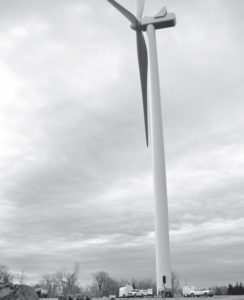The following area students have been named to the Spring 2016 presidents list at Husson University, in Bangor.
Lyndsay Weese, of Athens, is a senior who is enrolled in Husson’s Bachelor of Science in Nursing program.
Shayne Brown, of Augusta, is a junior who is enrolled in Husson’s Bachelor of Science in Mass Communications with a concentration in Marketing Communications program.
Sophia Ramirez, of Augusta, ME is a freshman who is enrolled in Husson’s Bachelor of Science in Criminal Justice program.
Tabitha Willman, of Augusta, is a senior who is enrolled in Husson’s Bachelor of Science in Healthcare Studies and Master of Business Administration (MBA) in Health Care Management program.
Samuel Jandreau, of China, is a senior who is enrolled in Husson’s Bachelor of Science in Kinesiology – Human Movement Science and Doctor of Physical Therapy program.
Zoe Mather, of China, is a sophomore who is enrolled in Husson’s Bachelor of Science in Kinesiology – Human Movement Science and Doctor of Physical Therapy program.
Tyler Rollins, of China, is a sophomore who is enrolled in Husson’s Undeclared program.
Courtney Smart, of Cornville, is a sophomore who is enrolled in Husson’s Bachelor of Science in Health Sciences program.
Leah LaBree, of East Vassalboro, is a senior who is enrolled in Husson’s Bachelor of Science in Mass Communications with a concentration in Journalism program.
Spencer Folsom, of Fairfield, is a freshman who is enrolled in Husson’s Bachelor of Science in Health Sciences program.
Tennyson Martin, of Fairfield, is a sophomore who is enrolled in Husson’s Bachelor of Science in Health Sciences program.
Kyleigh Plourde, of Jefferson, is a sophomore who is enrolled in Husson’s Bachelor of Science in Criminal Justice and Bachelor of Science in Psychology with a Mental Health Rehabilitation Technician/Community (MHRT/C) Certification program.
Alexis Prescott, of Liberty, is a freshman who is enrolled in Husson’s Bachelor of Science in Accounting and Master of Business Administration (MBA) program.
Makaela Michonski, of Norridgewock, is a senior who is enrolled in Husson’s Bachelor of Science in Kinesiology – Human Movement Science and Doctor of Physical Therapy program.
Amanda Saucier, of Norridgewock, is a senior who is enrolled in Husson’s Bachelor of Science in Kinesiology – Human Movement Science and Doctor of Physical Therapy program.
Darian Hughes, of Oakland, is a junior who is enrolled in Husson’s Bachelor of Science in Psychology program.
Raina Rauch, of Palermo, is a junior who is enrolled in Husson’s Bachelor of Science in Healthcare Studies and Master of Science in Occupational Therapy program.
Kaitlyn Grover, of Skowhegan, is a senior who is enrolled in Husson’s Bachelor of Science in Nursing program.
Cailee Manzer, of Skowhegan, is a freshman who is enrolled in Husson’s Bachelor of Science in Healthcare Studies and Master of Science in Occupational Therapy program.
Ali York, of Skowhegan, is a junior who is enrolled in Husson’s Bachelor of Science in Business Administration with a concentration in Financial Management program.
Christina Belanger, of South China, is a sophomore who is enrolled in Husson’s Bachelor of Science in Nursing program.
Meghan Farrell, of Vassalboro, is a junior who is enrolled in Husson’s Bachelor of Science in Healthcare Studies program.
Destiny Silcott, of Windsor, is a senior who is enrolled in Husson’s Bachelor of Science in Kinesiology – Human Movement Science and Doctor of Physical Therapy program.
Logan Vashon, of Winslow, is a sophomore who is enrolled in Husson’s Bachelor of Science in Kinesiology – Human Movement Science and Doctor of Physical Therapy program.


 by Katie Ouilette
by Katie Ouilette

 by Katie Ouilette
by Katie Ouilette






 INside the OUTside
INside the OUTside